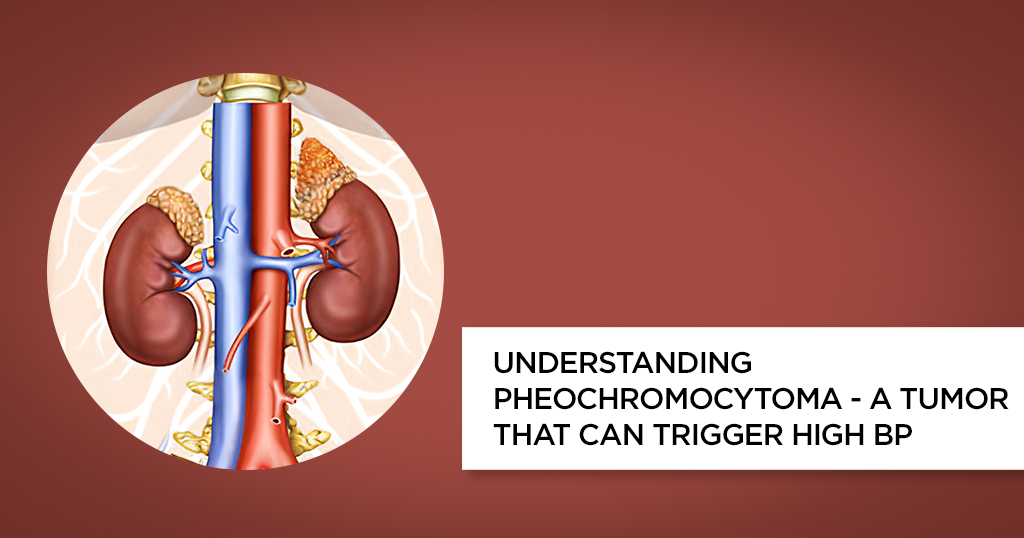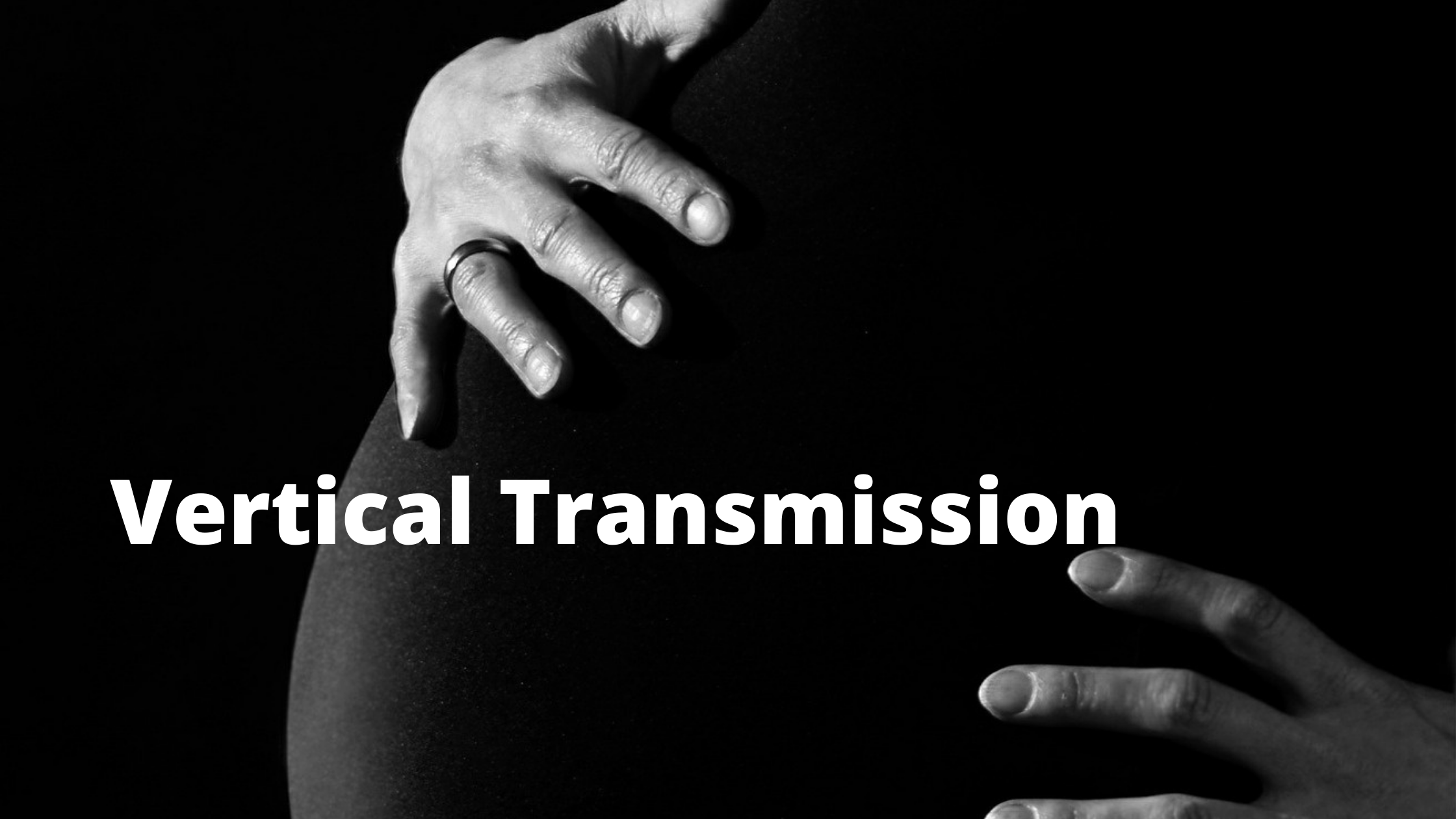Understanding Pheochromocytoma – A Tumor that can Trigger High BP


The human body is composed of various endocrine glands. The function of these glands is to secrete hormones to maintain a regulatory mechanism. One of the important endocrine glands in humans is the supra-renal gland, also called the adrenal gland. These are triangle-shaped glands located above both kidneys.
These glands help regulate metabolism, improve immunity, control blood pressure, blood sugar, stress, etc. These glands are composed of two parts, medulla and cortex, which are responsible for secretions of various hormones, such as cortisol, aldosterone, DHEA, etc.
However, these glands are also prone to various infections and tumors (benign or malignant), leading to severe complications. Pheochromocytoma and Paragangliomas are some of the few tumors of adrenal glands. Tumours that arise in the adrenal medulla are defined as pheochromocytomas, and those outside the adrenal gland are called paragangliomas.
In this article, we will discuss and help you understand what Pheochromocytoma is, what are its causes, symptoms, complications, and various treatment options available to cure Pheochromocytoma.
What is Pheochromocytoma?
Pheochromocytoma is a rare catecholamine secreting (neuroendocrine) tumor which is derived from chromaffin cells. It is a Greek word where Pheo means dusky, chroma is color, and cystoma means a tumor. It is usually a benign (non-cancerous) tumor of the adrenal glands but it can turn malignant too. It arises usually in one adrenal gland , although rarely it may arise in both.
What are the causes of Pheochromocytoma?
Doctors still do not know the exact cause and mechanism of Pheochromocytoma. It is derived from chromaffin cells. These tumors are believed to have a genetic inheritance. Pheochromocytoma may occur at any age, but it is most common between 20-50 years of age. People who inherit Pheochromocytoma are also at risk of developing other conditions such as:
● Von-Hippel-Lindau disease: A condition where multiple cysts and tumors arise in the nervous system , kidneys, etc.
● Neurofibromatosis (NF1): Multiple tumors arise on the skin and optic nerve.
● Multiple Endocrine Neoplasia (MEN2): A type of thyroid carcinoma.
● Hereditary paraganglioma syndromes: It is an inherited disorders that result in either pheochromocytomas or paragangliomas.
What are the symptoms of Pheochromocytoma?
In Pheochromocytoma, there are high levels of adrenaline and noradrenaline produced. The symptoms occur in spells ; they may lead to a paroxysmal increase in blood pressure, heart rate, blood sugar, etc
Common symptoms associated with Pheochromocytoma can be-
● Headache
● Heavy sweating
● Rapid heartbeat
● Tremors
● Paleness in the face
● Shortness of breath
● Panic attack-type symptoms
What are the risk factors for Pheochromocytoma?
People with inherited genetic conditions are more prone to conditions like Pheochromocytoma or Paragangliomas. The symptoms may increase as the disease progresses. There are a few other actions or conditions that may trigger worsening of symptoms such as:
● Extreme exercise
● Hypoxia (low oxygen levels)
● Stress or anxiety
● Labor
● Anesthesia during surgery
● Tyramine (found in cheese, alcohol, smoked meats, etc.)
● Drugs such as MAO inhibitors , Amphetamine, cocaine, etc.
What are the complications of Pheochromocytoma?
High blood pressure in Pheochromocytoma can affect multiple systems such as cardiovascular, renal, nervous system, etc. These can cause damage to organs and lead to organ failure, which can be life-threatening. Few of such conditions are:
● Stroke
● Problems with the nerves of the eye
When to see your doctor/ physician for Pheochromocytoma?
A Pheochromocytoma may give rise to an increase in blood pressure, increased heartbeat, headaches, etc. Take doctor’s appointment if you notice the below-mentioned symptoms:
● An uncomfortable rise in blood pressure even after taking medications (Episodic)
● Severe panic attacks
● Severe headaches
● Difficulty in breathing
● Severe abdominal pain
● Family history of Pheochromocytoma
Call 1860-500-1066 to book an appointment.
What are the diagnostic tests conducted for Pheochromocytoma?
To treat a Pheochromocytoma, your doctor will first take a detailed history, perform a few examinations and tests such as:
● 24-hour urine sample: In this test, a 24-hour urine sample is taken from the patient. Usually, a rise in urine metanephrines (breakdown products of catecholamine that urine produces over 24 hours) indicates a Pheochromocytoma. If there is an abnormal increase in urine metanephrines, please consult a doctor at the earliest.
● MRI Scan
● CT Scan
● PET Scan
● MIBG (M-Iodobenzylguanidine) scan: It is a test/ nuclear scan, where a radioactive substance (radioisotope) is injected and the uptake by the tumour cells are measured
What are the treatment options available for Pheochromocytoma?
People affected with Pheochromocytoma are recommended to have a low salt diet. However, most cases of Pheochromocytoma are only successfully treated with surgical removal of tumors. Medications such as alpha-blockers (Phenoxybenzamine) have shown some good results in treatment for Pheochromocytoma. For malignant Pheochromocytoma , a combination of chemotherapy and radiotherapy is often prescribed after successful surgery.
Frequently Asked Questions (FAQs)
● What does a pheochromocytoma attack feel like?
Most of the cases of Pheochromocytoma present with increased blood pressure that is not controlled by medicines. They may also have other symptoms like severe headache, pain in the chest or lower abdomen, fast heartbeats, excessive sweating, fatigue, episodes of anxiety attacks and seizures, etc.
● What happens if a pheochromocytoma is not treated?
Pheochromocytoma cases should be treated as soon as they are diagnosed as these diseases can turn into severe life-threatening conditions. Pheochromocytoma increases blood pressure. An increase in blood pressure can harm multiple body systems such as kidneys, brain, etc., eventually leading to organ failure, cardiac arrest, or even sudden death.
● Can Pheochromocytoma be cured?
There is no cure for malignant Pheochromocytoma as the prognosis of these conditions is poor. The benign variety of Pheochromocytoma may need both medical treatment and surgical removal of tumors.
Call 1860-500-1066 to book an appointment.
© Copyright 2024. Apollo Hospitals Group. All Rights Reserved.
 +91 8069991061
Book Health Check-up
Book Health Check-up
Book Appointment
Book Appointment
+91 8069991061
Book Health Check-up
Book Health Check-up
Book Appointment
Book Appointment







